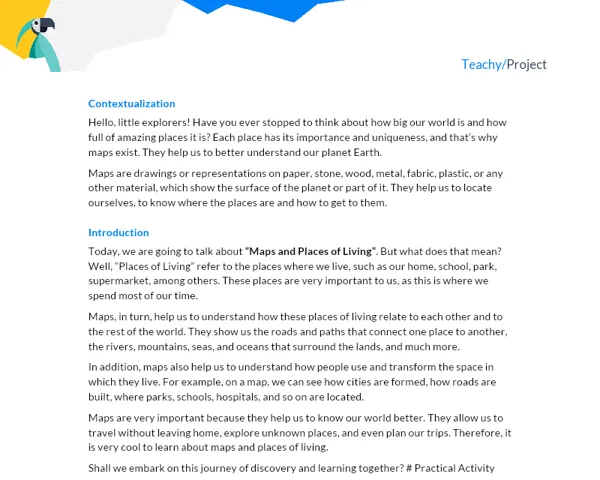Contextualization
Hydrography is dedicated to the study of continental and oceanic waters, including rivers, lakes, glaciers, groundwater, and seas, their characteristics, occurrences, distribution, and influence on the environment. Hydrography is essential for understanding the water cycles, planning water resources, and maintaining life on the planet.
Aquifers are underground structures formed by porous and permeable rocks that allow water storage and movement. They represent an important source of drinking water, irrigation, and industrial use. Aquifers are essential for maintaining life and the economy, as well as playing a crucial role in ecosystem maintenance.
A watershed is a land region drained by a main river, its tributaries, and sub-tributaries. It is essential for water resource management, biodiversity maintenance, agriculture, and natural disaster prevention.
Relevance and Real-World Application
Both hydrography and aquifers and watersheds have great relevance in our daily lives. They are fundamental for city water supply, agriculture, energy generation, and ecosystem maintenance. Proper management of these resources is essential for sustainability and addressing climate change.
In the Brazilian context, we have the Guarani Aquifer, one of the world's largest groundwater systems, and the Amazon River Basin, the world's largest watershed. These are fundamental structures for maintaining the country's life and economy, and their study is essential for their conservation.
Practical Activity - Building a Watershed and Aquifer Model
Activity Title: AquiFluxo - Understanding the water flow and the formation of aquifers.
Project Objective
- Understand the formation and importance of hydrography and aquifers.
- Understand how the water cycle works and how it is influenced by urban and rural environments.
- Develop teamwork, research, communication, and critical thinking skills.
- Apply the Geography and Science concepts learned in class to a practical project.
Detailed Project Description
In this project, students will build a model of a watershed and an aquifer. They will simulate water flow, storage in the aquifer, and the relationship between the water cycle, surface runoff, and the influence of different soil and vegetation covers. Students will record the results of their observations and the information they researched for the project in a logbook.
Required Materials
- Two large transparent plastic trays
- Fine and coarse sand
- Small rocks and pebbles
- Clay
- Water colored with food dye
- Small plants or moss
- Plastic wrap
- Modeling spatulas
- Small hose or large syringe
- Camera or smartphone for documentation
- Notebook for the logbook
Detailed Step-by-Step
-
Student groups, consisting of 3 to 5 members, should start by researching the water cycle, the components of watershed morphology, and the formation and importance of aquifers.
-
Next, they should outline a plan on how to build the model, taking into account the researched concepts.
-
After planning, the construction of the model in the tray begins. One half of the tray will be used to simulate a rural area and the other half an urban area. Students should model the watershed and aquifer using the mentioned materials.
-
Once the model is built, students will simulate rain using the hose or syringe and colored water. They should observe how the water flows, how it is stored in the aquifer, and the differences between rural and urban areas.
-
Students should document the entire process with photos and detailed notes in the logbook.
-
After completing the experiment, students should research to understand and explain the observed results.
-
Finally, students should write a report containing:
- Introduction: This section should contextualize the theme, its relevance and real-world application, as well as the objective of this project.
- Development: Here, the theory behind the project theme should be explained, the activity carried out in detail, the methodology used indicated, and finally, the results obtained presented and discussed.
- Conclusion: Here, students should conclude the work by summarizing their main points, explaining the learnings obtained, and drawing conclusions about the project.
- Bibliography: Finally, the report should include all sources of information used during the project work.
This project should be carried out over several weeks to ensure that students have time to research, plan, build the model, conduct the experiment, and write the report.

